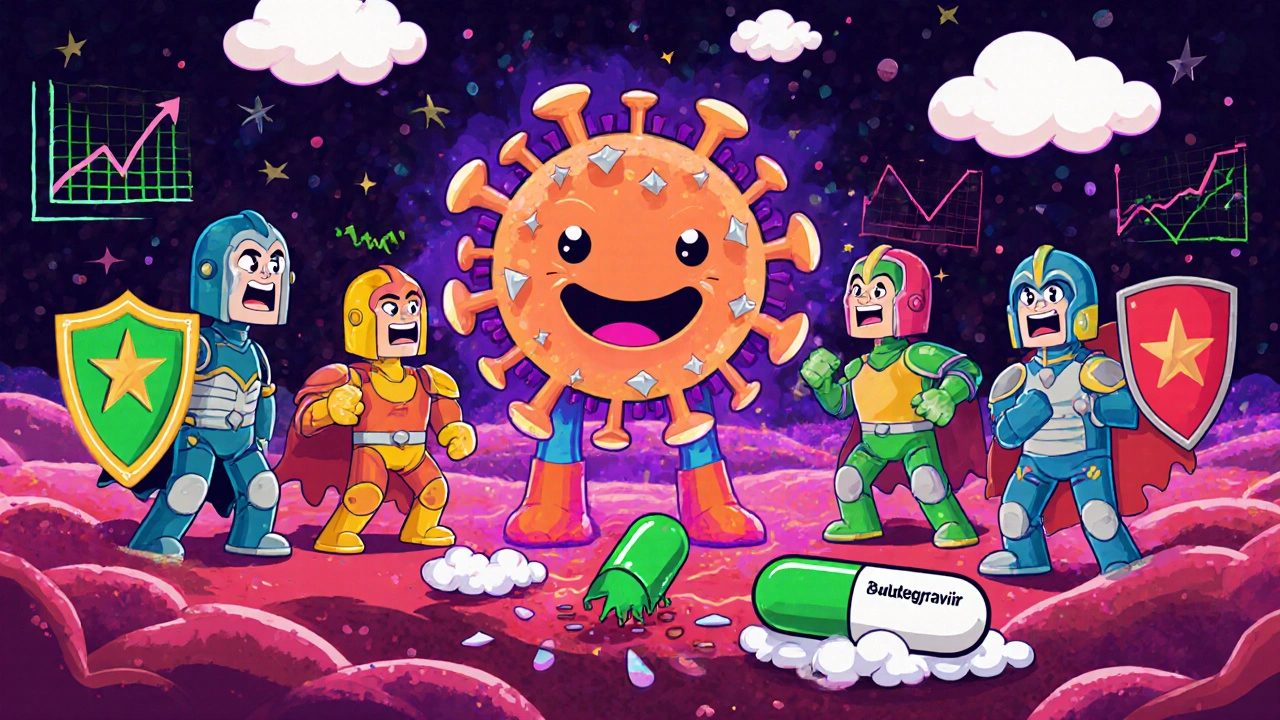Antiretroviral HIV Drugs: What They Are, How They Work, and Which Ones Are Used Today
When you hear antiretroviral HIV drugs, medications designed to suppress the human immunodeficiency virus and prevent it from multiplying in the body. Also known as ARV drugs, they are the reason people with HIV can now live long, healthy lives — not just survive, but thrive. These aren’t cure-all pills. They don’t wipe out the virus completely. But they do what matters most: they hold the virus at bay, keep the immune system strong, and stop transmission to others.
Antiretroviral HIV drugs work by targeting different stages of the virus’s life cycle. Some block the virus from entering cells. Others stop it from copying its genetic material. A few prevent it from assembling new virus particles. This multi-target approach is why treatment usually combines three or more drugs — called antiretroviral therapy, a standard combination regimen that uses drugs from at least two different classes to prevent resistance. If you use just one drug, the virus quickly adapts and becomes resistant. But with the right mix, it can’t escape.
There are five main classes of HIV medication, drugs grouped by how they interfere with the virus’s ability to replicate: nucleoside reverse transcriptase inhibitors (NRTIs), non-nucleoside reverse transcriptase inhibitors (NNRTIs), protease inhibitors (PIs), integrase strand transfer inhibitors (INSTIs), and entry inhibitors. Today, INSTIs like dolutegravir and bictegravir are the go-to first-line options because they’re powerful, have fewer side effects, and are less likely to cause resistance. Older drugs like efavirenz or lopinavir are still used, but mostly when newer options aren’t available or don’t work.
People often think HIV treatment is complicated. It doesn’t have to be. Many modern regimens come in single pills, taken once a day. Some even combine three drugs in one tablet. That’s a big shift from the old days, when patients took dozens of pills across multiple times a day. Today, adherence is easier — and that’s critical. Missing doses can lead to resistance, which limits future options. But with consistent use, viral load can drop to undetectable levels, meaning the virus is so low it can’t be passed on. That’s not just personal health — it’s public health.
These drugs don’t just treat HIV. They protect families, partners, and communities. They help people plan pregnancies, work full-time, travel, and grow old. And while side effects exist — nausea, headaches, or long-term changes in fat or bone density — they’re usually mild and manageable. Newer drugs have made these risks much smaller than before.
What you’ll find in the posts below isn’t a list of every drug ever made. It’s a practical, real-world look at how HIV treatments compare with other medications — not just for HIV, but for conditions that often overlap. You’ll see how drugs like dolutegravir stack up against alternatives, how side effects compare, and what happens when people need to switch because of cost, access, or tolerance. These aren’t theoretical guides. They’re written for people who need to make real choices — whether they’re patients, caregivers, or just trying to understand what’s out there.
Antiretroviral HIV Medications: Understanding Complex Interactions and Drug Resistance
Antiretroviral HIV medications suppress the virus effectively - but drug interactions and resistance can undermine treatment. Learn how modern regimens work, why resistance develops, and what’s next in HIV care.
Keep Reading
